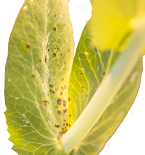P24870-B22
| Project number P24870-B22 |
Tripartite symbiosis formed by Pisum sativum, rhizobia and mycorrhiza | |
| |
|
Abstract - Introduction
As a response to the increasing demand from society for agriculture to minimize the negative impacts
on environment and landscape values, farmed legumes play a key role. Among them, field pea (Pisum sativum L.) is one of the oldest domesticated
crops worldwide. It provides flexibility and many benefits to growers and consumers. However, P. sativum diseases, Didymella (Mycosphaerella) pinodes
can limit delivering its services and its productivity. D. pinodes may cause severe yield losses when lesions reduce green photosynthetic tissue of
the plant. Although significant effects of belowground tripartite symbiosis (legume roots + Rhizobium + mycorrhizal fungi) on legume growth and quality
were measured, studies of the symbionts effects on plant health (fitness and its defense response against aboveground plant pathogenic fungi) and the
reciprocal suppressions have not yet been well addressed and understood. Nonetheless, these interactions need to be studied case by case and data results
from such kinds of studies fill databases with a wealth of information.
|
 Pisum leaves with Ascochyta blight infection  Pisum sativum plant with Ascochyta blight infection |
||||||||||||||||||||||||||||||||||||||||||||||||||||||||||||||||||||||||||||
|
|
Supported by |
  |